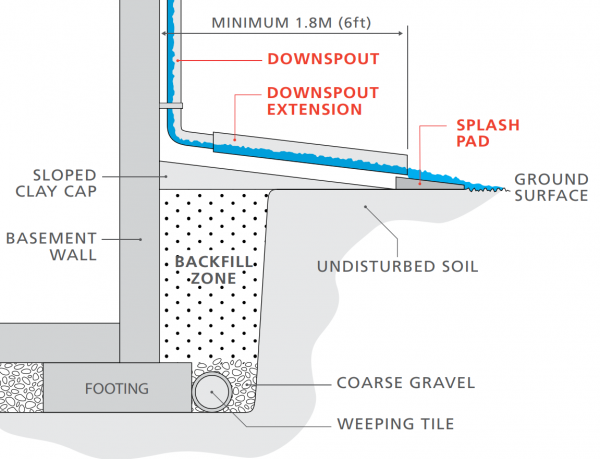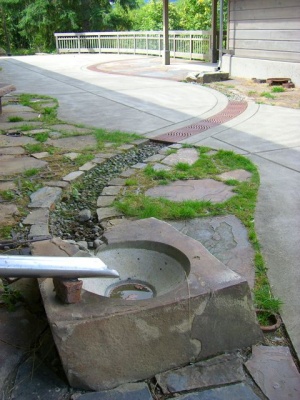Downspout disconnection


Downspout disconnection programs are common in many older urban centers. They require that residents retroactively disconnect their downspouts from the municipal sewer system. This is due to older sewer systems being undersized for the combined flow of sanitary waste and stormwater. New projects should consider remaining independent of municipal storm sewers from the outset. To prevent flooding and achieve stormwater control, widespread use of small, site scale technologies such as downspout disconnection can reduce the size of shared LID installations.
The Ontario Building Code[2] requires that:
"Where downspouts are provided and are not connected to a sewer, extensions shall be provided to carry rainwater away from the building in a manner that will prevent soil erosion."
Recommended strategies to receive downspout runoff include:
- ↑ The Institute For Catastrophic Loss Reduction. Protect your home from Basement flooding: Designed for safer living®. https://www.iclr.org/wp-content/uploads/PDFS/protect-your-home-from-basement-flooding.pdf. 2011. Accessed 3 September, 2021
- ↑ Province of Ontario. (2018). O. Reg. 332/12: BUILDING CODE. Retrieved February 23, 2018, from https://www.ontario.ca/laws/regulation/120332